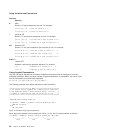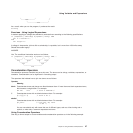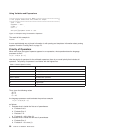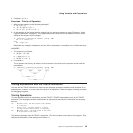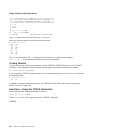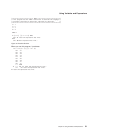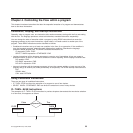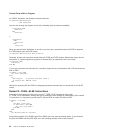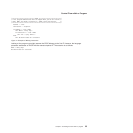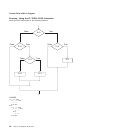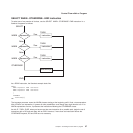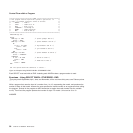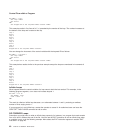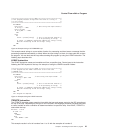As a REXX instruction, the flowchart example looks like:
IF expression THEN instruction
ELSE instruction
You can also arrange the clauses in one of the following ways to enhance readability:
IF expression THEN
instruction
ELSE
instruction
or
IF expression
THEN
instruction
ELSE
instruction
When you put the entire instruction on one line, you must use a semicolon before the ELSE to separate
the THEN clause from the ELSE clause.
IF expression THEN instruction; ELSE instruction
Generally, at least one instruction should follow the THEN and ELSE clauses. When either clause has no
instructions, it is good programming practice to include NOP (no operation) next to the clause.
IF expression THEN
instruction
ELSE NOP
If you have more than one instruction for a condition, begin the set of instructions with a DO and end them
with an END.
IF weather = rainy THEN
SAY 'Find a good book.'
ELSE
DO
PULL playgolf /* Gets data from input stream */
If playgolf='YES' THEN SAY 'Fore!'
END
Without the enclosing DO and END, the language processor assumes only one instruction for the ELSE
clause.
Nested IF...THEN...ELSE Instructions
Sometimes it is necessary to have one or more IF...THEN...ELSE instructions within other
IF...THEN...ELSE instructions. Having one type of instruction within another is called nesting. With nested
IF instructions, it is important to match each IF with an ELSE and each DO with an END.
IF weather = fine THEN
DO
SAY 'What a lovely day!'
IF tenniscourt = free THEN
SAY 'Let''s play tennis!'
ELSE NOP
END
ELSE
SAY 'We should take our raincoats!'
Not matching nested IFs to ELSEs and DOs to ENDs can have some surprising results. If you eliminate
the DOs and ENDs and the ELSE NOP, as in the following example, what is the outcome?
Control Flow within a Program
34
CICS TS for VSE/ESA: REXX Guide



